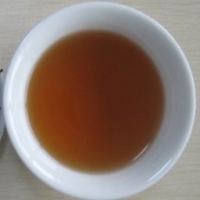Bariatric Surgeon Jobs
Obesity is an excess of total body fat, which results from caloric intake that exceeds energy usage.
Laparoscopic Surgery
Laparoscopy is commonly performed procedure to Investigate and some key hole surgeries on abdominal and pelvic organs.
Laparoscopy is direct visualization of the abdominal cavity and intra-abdominal organs by using a laparoscopy. The laparoscope is a long thin instrument with a light source at its tip, to light up the inside of the abdomen or pelvis. Fibreoptic fibres carry images from a lens, also at the tip of the instrument, to a video monitor, which the surgeon and other theatre staff can view in real time.
Carbon dioxide (CO2) is put into the abdomen through a special needle that is inserted just above the navel. This gas helps to separate the organs inside the abdominal cavity, making it easier for the physician to see the the intra-abdominal organs during laparoscopy. The gas is removed at the end of the procedure.
Slim Life Solutions- Check of the Weight loss, treatment such as Weight loss surgery, lapband surgery and laparoscopic surgery.
Laparoscopic Sleeve Gastrectomy
Sleeve Gastrectomy (Tube Gastrectomy) procedure involves removing the lateral 2/3rds of the stomach with a stapling device. It can be done laparoscopically ( keyhole surgery) but is not reversible. It basically leaves a stomach tube instead of a stomach sack.
Laparoscopic Adjustable Gastric Banding
In Adjustable gastric banding procedure, a hollow band made of special material is placed around the stomach near its upper end, creating a small pouch and a narrow passage into the larger remainder of the stomach. The band is then inflated with a salt solution. It can be tightened or loosened over time to change the size of the passage by increasing or decreasing the amount of salt solution.
Laparoscopic Gastric Bypass
In Gastric Bypass procedure, a small stomach pouch is created to restrict food intake. Next, a Y-shaped section of the small intestine is attached to the pouch to allow food to bypass the lower stomach, the duodenum (the first segment of the small intestine), and the first portion of the jejunum (the second segment of the small intestine). This bypass reduces the absorption of nutrients and thereby reduces the calorie intake.
For more Information, appointment, or registering for the informational seminar please call the office Monday-Thursday 8:00am - 4:30pm and Friday 7:30am - 4:00pm or email our Bariatric Coordinator [email protected]
Related Articles
-
Find Out How To Lose Weight Fast Exercises - Three Weight Loss Suggestions
Many people are attempting to lose extra & more weight on a regular b
-
Fat Loss Diets - Fast Fat Reduction
There are lots of burn fat review diets out there but unfortunately so
-
Trace Cell Phone Calls And Numbers
Receiving multiple calls from an unrecognisable number can be very ann
-
How To Lose Weight Really Fast?
This is the age of weight problems resulting from abnormal life-style
-
SlimChews - How To Decrease Appetite
There are so many approaches in losing weight in order to maintain a h
-
Parents Can Help Their Child Lose Weight If They Lose Weight Themselves
Today, childhood obesity is a common threat because of the changes in
- DON'T MISS
- Hunger Suppressants Are One Of The Most Effective Forms Of Weight Reduction Pills
- How to Lose a Double Chin Fast!
- Effect of Sleep on Weight Loss.
- Ayurvedic Appetite Suppressant Remedies To Reduce Body Weight Naturally
- Diet Plans For Gastritis
- Lose Weight Fast In One Mont
- FatLoss4Idiots - Can You Really Lose 9 Lbs in 11 Days?
- La Times Believes Exercise Will Not Work In Losing Weight
- Fat Burning Foods That Literally Make You Lose Weight Fast. What Are They and How Do They Work?
- Eight Tips on Effective Weight Loss




